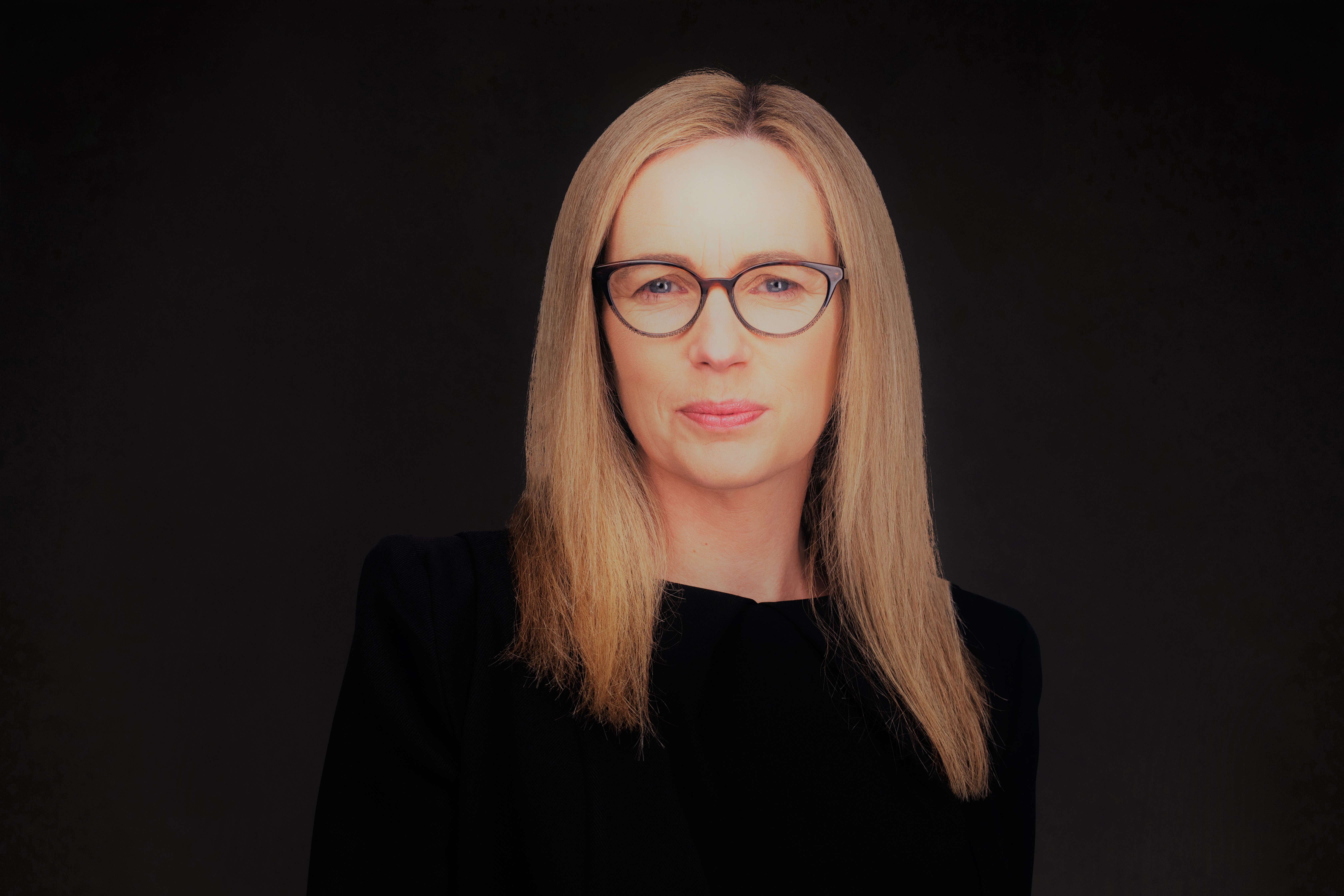
Irish Educator Reveals Country in Crisis
By Luke Schmaltz, VOICES Newsletter Editor
Dr. Sharon Lambert is a professor of psychology at University College Cork (UCC) in Cork, Ireland. At the School of Applied Psychology, she focuses on the impact of psychological trauma on substance use, mental illness, and homelessness.
Amid a country-wide substance-use crisis, Lambert decided to take action. She recently collaborated with an artist called Spicebag and a host of businesses, government agencies, and private parties. Her mission was to broadcast images and voices of substance-loss grief through a large-scale art installment.
Seeds of a Vision
“I ended up in this project through my previous work in the community,” Lambert begins. “Before I worked in University, I rendered counseling and addiction services to teens and young adults.”
“We have been lucky. We don’t have the same scale of problems as the United States does, because it is much harder to get medication in Ireland. Many over the counter and pharmaceutical drugs are tightly restricted. At one point, the people trafficking illegal drugs didn’t approve of heroin, so they kept it out. But there was a change in whoever oversaw that market, and then the heroin started showing up. We also have quite a problem with benzodiazepines.”
Although many of the young people Lambert worked with were in difficult situations, none were overdosing and dying. When the crisis ramped up and lives were being lost, Lambert and her colleagues found themselves at a standstill. “Once our young people started dying, we didn’t know what to do,” she says.
Imperative Research
“I left that job to work in academia,” Lambert continues. “Since I had experience working in addiction services, the National Family Support Network approached me and asked if I would work with them. They said, ‘Aside from the numbers in the national drug-related death index, we don’t know anything about drug-related deaths. There is no in-depth research.’”
“That was in 2015. When I Googled it, I couldn’t believe what I discovered. Considering the number of global drug-related deaths at the time, there were only six published papers worldwide. I thought it was a mistake, but there was hardly any research.”
“So, we worked with 17 family members – a mixture of bereaved mothers, fathers, siblings, and children – and conducted our first study, which was looking at the impact of drug-related death on families. The paper we published was titled, ‘Special death’: Living with bereavement by drug-related death in Ireland.”
“I interviewed each of the families as a group,” Lambert says. “For many of them, it was the first time they had spoken about the death in any detail in front of one another. Many of them felt like they did not have a right to grieve. They felt that they didn’t deserve to feel sad due to their loved one’s behavior. The general perception was that someone who died from cancer fought to live, whereas someone who died from an overdose chose to die. There was a real lack of understanding of substance misuse as a health issue – it was seen as a choice.”
Dynamic Revelations
“When we analyzed the data, we determined that a drug-related death was considered a bad death because of the stigmatized grief. People were not able to grieve in the same way as they would if their loved one died differently.”
“We found that their grieving was similar to that of other stigmatized deaths such as murder and suicide. We discovered that the period of shock lasted anywhere from three to five years. There was stigma, shame, and family dynamic issues. Some people were sad while others were angry. Some indicated that if their loved one was still alive, they would continue to support them while others favored more of a tough love approach.”
“There was a lot of anger towards substance use, mental health services, and the justice system. People were upset because they felt their loved ones had been underserved and opportunities were lost when that person reached out for help. The obstacles that were placed in front of them were too large and they lost hope.”
“Ireland has the third highest drug-related fatality rate in the European Union,” Lambert explains. “Portugal used to be in the top three but as we know, they implemented a health-led approach. Now, they are at the bottom of that scale with the lowest drug-related fatality rate in the EU. Ireland claims to have a health-led approach to drug use, but in reality, it doesn’t.
The First of Its Kind
On August 30, 2024, the Hidden Grief project was unveiled in Cork, Ireland. The installation intentionally coincided with International Overdose Awareness Day (IOAD). The collaboration between Lambert’s UCC research team, the artist Spicebag, and community partners captivated viewers with its stark portrayal of grief from drug-related deaths.
“It was amazing,” Lambert says. “Spicebag read the raw data – the words of bereaved family members, peers, and healthcare workers. He created an art piece which was a video projection.”
Ground Zero
“When we embarked on this, we had no money, no location, no equipment, no projector, and no technical experience. So, I went around asking people to help us. CPS (Child Protective Services), UCC, and Cork City Council made donations. When we spoke with them, we simply said, ‘It is IOAD, we have all of these people who have died, all of their loved ones left behind, and it has never been publicly acknowledged.’”
“We found a location, a massive wall in the city, which we thought would be an ideal place for the projection because of the foot traffic. Plus, on the other side of that wall is an emergency homeless shelter. We then realized we needed a projector and someplace to position it and plug it in.”
“The public transport bus station, which is owned by the state, was located directly across the street. I contacted them and asked if we could put a projector on one of the upstairs floors of the building and point it out the window onto the wall across the road. They said, ‘Absolutely. Let us know what you need.’”
Shining a Light
“Then, we had to contact loads of companies who make projectors, because it turns out, you need a really powerful projector, much stronger than what you would find in a cinema, in order to project such a massive image outside. A local company replied, agreeing to loan us an $80,000 (Euro) projector and send staff to install it, because it is huge.”
“We projected the enormous dimensions of the video feed every night for one week from 9:00 until midnight. Just before that, we unveiled the installment at UCC, and there were about 170 in attendance – a mixture of bereaved people, former substance users, direct service providers, politicians, and academics. Spicebag did an amazing job with the music, words, and images. There was not a dry eye in the house.”
Powerful Reflections
“As a culture, Irish people are averse to ever saying they are proud of anything,” Lamber explains. “But when I got home afterward, I sat down with my family and said, ‘I know we are not supposed to say we are proud of anything, but I am proud of this. It is the best thing I have ever done in my life.’”
“During the week-long installment, I would go to the bus station to watch people go by and react to the images,” Lambert recalls. “Once they saw the projection, they would stop, and they would be rooted to the ground. While there was no audio for the outside projection, the images and quotes were enough to captivate onlookers. It was interesting because some were people on their way home from work, while others were coming to the bus station to buy drugs.”
Message Received
Hidden Grief is a three-minute and twenty-four-second sequence of video clips and text overlay. A black-and-white close-up reel of a person’s eyes, looking about and blinking, comes up for a few seconds and disappears. It is followed with a quote from a bereaved person about their deceased loved one. The next clip is a different set of eyes, followed by a different quote. The effect is as harrowing as it is hypnotic. The statements include intimate reflections, such as:
- “He was my best friend.”
- “I would have taken a bullet for him.”
- “Sometimes I feel like I deserve to be punished.”
- “I watched it online, the funeral.”
- “You get those eyes watching you like, oh he was with him when he died.”
- “It’s not just him that died, it’s the father he could have been.”
- “I heard about somebody who died from drugs. I was jealous.”
- “And now he’s dead and I’m alive.”
- “How the f@*k did he die?”
- “I would drive out to the grave. It was like I was making his bed.”
- “I wanted to die like.”
- “I wanted to numb all the feelings.”
- “Everything we do now, we try to give hope to everyone.”
“We did not release the video publicly,” Lambert says, “Because we are trying to get funding for spontaneous showings in Belfast, Dublin, and Limerick.”
While Hidden Grief was initially aligned with IOAD, future showings of the piece may not coincide with the late August event. This is simply due to the seasonal overabundance of daylight. “That time of year, it is daylight in Ireland until around 9:30,” Lambert says. “We may show Hidden Grief on November 2, All Souls Day. It is a day to remember people who have died, and the sun sets much earlier than in August.”
